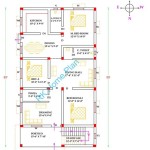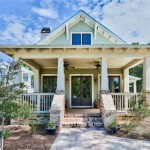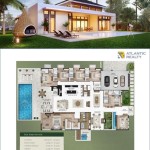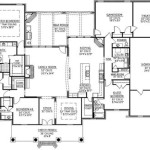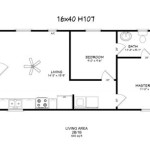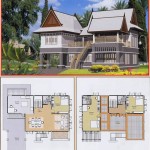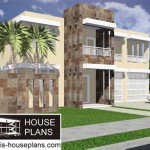Tin Roof Cabin Plans With Loft: Maximizing Space and Style
Tin roof cabin plans with lofts offer a compelling blend of rustic charm and efficient space utilization, making them a popular choice for individuals seeking a weekend retreat, a small home, or a hunting lodge. The appeal lies in the durability and cost-effectiveness of tin roofing, coupled with the added living space provided by a loft, often transforming a compact footprint into a surprisingly spacious dwelling. This article delves into the key considerations when selecting and implementing tin roof cabin plans with lofts, covering design principles, material choices, and structural elements.
Design Considerations for Tin Roof Cabin Plans With Lofts
The design phase is crucial for any construction project, and tin roof cabin plans with lofts are no exception. Careful consideration of several factors will ensure that the finished cabin meets the owner's needs and integrates seamlessly with the surrounding environment. These factors include the cabin's intended use, size limitations, local building codes, aesthetic preferences, and budget constraints.
The intended use of the cabin directly influences the layout and features. A cabin designed primarily for weekend getaways might prioritize a cozy living area and a well-equipped kitchen, while a hunting lodge could benefit from a larger storage space for equipment and supplies. Similarly, a cabin intended for full-time living requires a more robust infrastructure, including adequate insulation, plumbing, and electrical systems.
Size limitations are frequently dictated by the available land and local zoning regulations. Smaller lots often necessitate a vertical design, making a loft an ideal solution for maximizing living space without expanding the building's footprint. It is essential to research and comply with all applicable building codes, including setbacks, height restrictions, and environmental regulations. These codes ensure the safety and structural integrity of the building, as well as protect the surrounding ecosystem.
Aesthetic preferences play a significant role in shaping the cabin's overall appearance. Tin roofs can be incorporated into a variety of architectural styles, from traditional rustic designs to more contemporary and minimalist aesthetics. The choice of siding materials, window styles, and interior finishes should complement the tin roof and create a cohesive visual appeal. Cabin plans will also have to take into account the direction that the cabin will be facing to maximize sun warmth or keep it cooler. A good plan will also consider the prevailing winds for the area.
Budget constraints inevitably influence many design choices. Tin roofing is generally more affordable than other roofing materials, such as asphalt shingles or slate, but costs can vary depending on the type of tin used and the complexity of the roof design. Careful planning and material sourcing can help keep the project within budget without compromising quality or functionality. It is important to get several bids from contractors before beginning the project.
The design should also consider the climate the cabin will be situated in. Will it need to withstand heavy snow, high winds, or extreme temperatures? These factors will influence the materials chosen and the construction methods used.
Material Selection for Tin Roof Cabin Plans With Loft
The selection of appropriate materials is paramount for the longevity and performance of a tin roof cabin with a loft. The choice of roofing material, framing lumber, insulation, and interior finishes directly impacts the cabin's durability, energy efficiency, and overall comfort. Careful consideration should be given to the specific properties of each material and its suitability for the local climate and environmental conditions.
Tin roofing, more accurately described as metal roofing, is available in a variety of materials, including galvanized steel, aluminum, and copper. Galvanized steel is a popular choice due to its affordability and durability, while aluminum is lighter and more resistant to corrosion. Copper offers superior longevity and aesthetic appeal but comes at a higher cost. The gauge of the metal is also a critical factor. Thicker gauges are more resistant to damage and will withstand inclement weather better. Metal roofing should be installed according to manufacture specifications.
Framing lumber forms the structural skeleton of the cabin and must be strong enough to support the weight of the roof, walls, and loft. Pressure-treated lumber is recommended for ground contact to prevent rot and insect infestation. The size and spacing of the framing members should be determined by a structural engineer to ensure adequate load-bearing capacity. The plans should also consider the local seismic activity. Areas with high seismic activity may require additional reinforcing.
Insulation plays a vital role in regulating the cabin's temperature and reducing energy consumption. Options include fiberglass batts, spray foam, and rigid foam boards. Spray foam provides superior insulation and air sealing but is more expensive. Rigid foam boards are easy to install and offer good thermal resistance. The choice of insulation should be based on the climate, budget, and desired level of energy efficiency. Cabin plans should include an overview of the types of insulation to be used and how they will be installed.
Interior finishes contribute to the cabin's aesthetic appeal and comfort. Options include wood paneling, drywall, and paint. Wood paneling adds a rustic touch and provides a warm and inviting atmosphere. Drywall is a more versatile option that can be painted or textured to match any décor. The choice of interior finishes should be based on personal preferences and budget considerations. Natural wood is a popular choice, but it requires regular maintenance to prevent damage from moisture and insects. Cabin plans should specify the types of interior finishes to be used and how they will be installed.
The foundation type will also need to be considered. Options include a concrete slab, a crawl space, or piers. A concrete slab provides a solid and level base, while a crawl space allows for access to plumbing and electrical systems. Piers are a more economical option but may not be suitable for all soil conditions.
Structural Elements of Tin Roof Cabin Plans With Loft
The loft is a defining feature of these cabin plans and requires careful attention to structural details. Ensuring the loft is structurally sound and accessible is crucial for maximizing its functionality and safety. The weight of the loft, the supporting structure, and the accessibility through stairs or a ladder must all be carefully considered. The type of stairs or ladder should be planned for at the beginning of the building phase.
The loft floor joists must be strong enough to support the intended load. The size and spacing of the joists should be determined by a structural engineer based on the span and anticipated weight. The joists should be securely fastened to the supporting walls. The plans should clearly outline how the joists will be installed to ensure proper support and stability. The plans may also specify that solid lumber is used for the joists.
The loft access, typically achieved through stairs or a ladder, should be safe and convenient. Stairs provide easier access but require more space. Ladders are more compact but may not be suitable for everyone. The angle and width of the stairs or ladder should comply with building codes to ensure safe ascent and descent. Many local building codes require the use of stairs rather than ladders. The plans should specify the dimensions and materials for the stairs or ladder, as well as the location and installation method.
The roof pitch impacts the headroom available in the loft. A steeper pitch provides more headroom but requires more roofing material. A shallower pitch is more economical but may limit the usable space in the loft. The roof pitch should be carefully considered to balance cost and functionality. The plans should clearly indicate the roof pitch and the resulting headroom in the loft.
Adequate ventilation is essential for preventing moisture buildup and maintaining air quality in the loft. Roof vents, gable vents, and ridge vents can be used to promote airflow. The size and placement of the vents should be calculated to ensure adequate ventilation. The plans should specify the type and placement of the vents, as well as the ventilation rate. A good plan will also specify the type of sealant used around the vents to prevent leaks.
Natural light enhances the ambiance of the loft and reduces the need for artificial lighting. Skylights and dormer windows can be incorporated into the roof design to bring in natural light. The size and placement of the windows should be carefully considered to maximize light penetration and minimize heat loss. The plans should specify the size, type, and placement of the windows or skylights.
Overall, tin roof cabin plans with lofts offer a versatile and efficient solution for individuals seeking a small and affordable dwelling. By carefully considering the design principles, material choices, and structural elements, it is possible to create a cabin that is both functional and aesthetically pleasing.

32 X Alpine Cabin W Full Loft Architectural Plans Custom 1400sf Modern Cottage Blueprint

Tiny House Plan 506 Square Feet One Story Design With Loft

Diy Metal Roofing Small Houses Cabins Cottages Pin Up

Plan 62118 Country Cabin With Metal Roof

16 X 20 Redwood Cabin Loft Diy Build Plans 320sf Tiny House Blueprint

Loft Style Log Cabins By Treetop Homes Built In Michigan Na Ohio And Illinois

Plan 337004jun 2 Bed Modern Country Cottage House With Loft And Optionally Finished Basement 1300 Sq Ft

Vermont Cabin 24x30 Frame Only Pre Cut Kit Floor Plans

House Plans With Lofts Overlooking The Great Room Blog Floorplans Com

10x10 Two Y Shed With Loft Plans

